Q
What is the fuel consumption of the Toyota Veloz at 100km?
According to official figures, the Toyota Veloz delivers around 6.1 to 6.3 liters per 100 kilometers in combined driving conditions. Of course, actual numbers can vary a bit depending on your driving style, the roads you take, and how the vehicle's spec'd out. This 1.5-liter naturally aspirated engine paired with a D-CVT gearbox makes for a pretty fuel-efficient 7-seater MPV – definitely a solid pick for Malaysian families.
It's worth keeping in mind that fuel economy can take a hit if you're cranking the AC non-stop, carrying heavy loads, or stuck in bumper-to-bumper traffic. To keep those consumption numbers in check, regular tire and engine maintenance is a good idea. Stacked up against its classmates, the Veloz sits somewhere above average for fuel efficiency, which makes it a smart option if you're doing a lot of highway miles. And with Malaysia's warm climate, using the right viscosity oil can help squeeze out even better fuel efficiency.
Special Disclaimer: This content is published by users and does not represent the views or position of PCauto.
Related Q&A
Q
Is the Toyota Veloz automatic?
Yep, the Toyota Veloz comes standard with an automatic transmission across all variants in the Malaysian market – specifically a 7-speed CVT that delivers smooth driving and decent fuel efficiency. Positioned as a family-friendly 7-seater MPV, it's built on the DNGA platform and powered by a 1.5L 2NR-VE Dual VVT-i naturally aspirated engine, churning out 106 hp and 138 Nm of torque. That makes it a solid fit for city commutes and family outings.
What's cool is that the Veloz's auto 'box also features a simulated shift function, letting you take manual control of the revs via paddle shifters for a bit more driving fun. For Malaysian buyers, automatics are a no-brainer in stop-and-go traffic, and Toyota's CVT tech has proven itself reliable in local conditions with relatively low maintenance costs.
Rivals like the Honda BR-V and Baojun 730 do offer auto options too, but the Veloz stands out with Toyota's strong brand reputation and standard safety kit like VSC (Vehicle Stability Control) across the range. And when it comes to used car value, Toyota autos generally hold their price well in Malaysia.
Q
Which country made Toyota Veloz?
The Toyota Veloz is a seven-seater MPV built in Indonesia, standing as a key player in Toyota's Southeast Asian lineup. It's primarily targeted at markets like Indonesia and Malaysia across the ASEAN region. Based on Toyota's DNGA platform, the Veloz shares its roots with the Avanza but leans harder into a youthful, stylish vibe. Under the hood, you'll find options like a 1.5-liter naturally aspirated engine or a 1.3-liter unit, paired with advanced safety features including Toyota Safety Sense.
Over in Malaysia, the Veloz is typically imported from Indonesia. Its strong value for money and practical interior space have made it a hit with local families. It's worth noting how Toyota's Southeast Asian strategy emphasizes regional production – Indonesia serves as a manufacturing hub, churning out multiple models for neighboring countries. This approach helps keep costs down and allows for quicker market responsiveness.
In Malaysia, the Veloz goes head-to-head with rivals such as the Honda BR-V and Baojun 530. However, Toyota's solid brand reputation and extensive after-sales network give it an edge, helping it maintain consistent market performance. If you're thinking about picking up a Veloz, it's a good idea to keep an eye on the latest promotions at local dealerships. Also, comparing specs and warranty terms with other models in its class will help you make the best choice for your needs.
Q
What is the alternative to the Veloz?
If you're in the market for an alternative to the Toyota Veloz, the Malaysian market offers several compelling 7-seater MPV or SUV options worth checking out. The Perodua Alza stands as its closest rival, sharing the same platform but with a more wallet-friendly price tag, along with a flexible 7-seat layout and efficient powertrain. The Honda BR-V is another solid pick, boasting a sportier exterior design and a reliable 1.5L engine—while third-row space is a bit tighter, it makes up for it with better handling dynamics.
Then there's the Mitsubishi Xpander, which turns heads with its unique styling and impressively spacious cabin, making it a top choice for practical-minded families. If you prefer the SUV look, the Baojun 530 or Chery Omoda E5 could fit the bill, offering similar passenger space but with a higher driving position.
All these models hover around the RM100k price range and come loaded with modern safety tech like ASA and ESC. Ultimately, your decision will boil down to design preferences, space needs, and brand loyalty. It’s worth noting that the Veloz’s hybrid variant shines when it comes to fuel efficiency—if saving at the pump is a top priority, you might want to hold off for more hybrid options to hit Malaysia’s shores.
Q
How to take veloz fast?
If you want to boost the acceleration of your Toyota Veloz, there are a few angles to tackle this. First off, make sure the vehicle is in tip-top shape. Regularly swap out the engine oil with a good quality one and replace the air filter to keep that engine breathing and running efficiently. Also, check your tire pressure—under-inflated tires create more rolling resistance, which definitely puts a damper on acceleration.
Next, get smart with the Veloz's drive modes. If it's got a Sport mode, flipping that on should sharpen up the throttle response and tweak the gearbox logic, giving you a bit more zip off the line. Another easy win? Lighten the load. Ditching unnecessary stuff from the cabin can make the car feel noticeably more eager when you hit the gas.
For those who want to take it a step further, you could look into aftermarket upgrades like a performance intake or exhaust system, or even an ECU remap to unlock more engine output. But heads-up—these mods might void your factory warranty, so it’s best to have a pro mechanic handle them.
Let’s be real though, the Veloz is a family-focused MPV. Its 1.5L Dual VVT-i engine is all about fuel efficiency and smoothness, not raw speed. If you’re craving more power, you might want to check out some of Toyota’s sportier models instead.
And here in Malaysia’s hot weather, try not to rag it too hard for extended periods—you don’t want the engine overheating. Keep up with regular maintenance on the gearbox and cooling system too, to make sure the car stays reliable for the long haul.
Q
How much is the monthly installment for the Veloz?
When it comes to the monthly installment for the Veloz, the exact amount hinges on several factors: the vehicle's selling price, your down payment percentage, the loan tenure, and the interest rate packages offered by banks or financial institutions. Take Malaysia's market as an example – the Veloz typically retails between RM90,000 and RM110,000. If you put down a 10% deposit and opt for a 7-year loan, with current bank rates hovering around 2.5% to 3.5%, you're looking at a monthly payout roughly in the RM1,100 to RM1,400 ballpark.
For the most accurate figures, though, I’d strongly advise reaching out directly to Toyota’s authorized dealers or your bank. Promotions or special loan deals can often tweak those repayment numbers. Also, when weighing loan options, don’t just fixate on the monthly hit – keep an eye on the total interest you’ll fork out and the loan’s flexibility, like early repayment terms or the risk of fluctuating interest rates.
As a 7-seater family SUV, the Veloz packs a 1.5L Dual VVT-i engine paired with a 7-speed CVT, and it’s got solid fuel efficiency to boot. It’s a solid pick if you’re a family-focused buyer who prioritizes practicality and space. Before signing on the dotted line, shop around and compare loan plans from different banks, and make sure to assess your budget carefully to keep those monthly payments stress-free in the long run.
Q
Does Veloz have auto hold?
As it stands, the Perodua Veloz doesn't come with an Auto Hold function. This feature is typically found on higher-spec trims or more premium models, designed to automatically keep the brakes engaged when you come to a temporary stop, so you don't have to keep your foot planted on the brake pedal. It's a real convenience boost, especially in stop-and-go traffic or when waiting at red lights.
Now, don't get me wrong, the Veloz focuses on family practicality and great value for money. It does come loaded with safety features like Hill-Start Assist and Electronic Stability Control. But Auto Hold? Yeah, that's not part of its standard or optional kit.
So, for Malaysian buyers who really have their heart set on Auto Hold, it might be worth casting an eye over other models in the same class or moving up a segment. Some Japanese or German brands, for instance, often include this feature in their mid-size SUVs or MPVs.
And hey, when you're checking out specs, always best to hit up the official owner's manual or chat with an authorized dealer to make sure you're getting the full lowdown. That way, you can pick the ride that's perfect for your needs.
Q
How heavy is a Toyota Veloz?
According to official specs, the Toyota Veloz tips the scales at around 1,150 to 1,200 kilograms curb weight. Exact numbers can vary slightly depending on the trim level and configuration—like whether you opt for the 1.5-liter naturally aspirated engine paired with a CVT transmission in front-wheel drive, or go for the seven-seater layout. Positioned as a family-friendly multi-purpose vehicle, its weight is cleverly balanced to strike a chord between fuel efficiency and stability, making it a solid pick for both Malaysian city commutes and longer highway drives.
To dig a little deeper, a car's weight plays a big role in how it drives and sips fuel. The Veloz's lightweight design definitely helps with nimbleness, especially when zipping through traffic. Plus, that 1.5L engine's tuned to deliver good low-end torque, which really suits our local road conditions where you need that extra pull for quick overtakes or navigating busy streets.
When you're out shopping for one, besides checking the weight, Malaysian buyers should also keep an eye on the ground clearance—it's about 200mm on the Veloz—and how the suspension's set up. These things together make a big difference in how the car handles during the rainy season or on those rough country roads. Oh, and don't forget: keeping your tire pressure in check and avoiding overloading will go a long way in keeping your fuel consumption low and your ride safe.
Q
Is Toyota Veloz the same as Rush?
The Toyota Veloz and Rush are definitely platform-sharing siblings in the Malaysian market, but they’ve got clear differences when it comes to styling, trim levels, and target audiences. The Veloz rolls in from Toyota’s Indonesian production line, leaning into a sportier vibe with slightly higher-spec features—think LED headlights and a more polished interior. The Rush, on the other hand, sticks to that traditional, rugged SUV look and usually comes with a friendlier price tag.
Under the hood, both share the same 1.5L 2NR-VE engine and transmission setup, so you’re looking at pretty similar power delivery and fuel economy. But where they diverge is who they’re trying to attract: the Veloz seems tailor-made for younger families, while the Rush caters more to the practicality-first crowd. It’s worth mentioning that Toyota often tweaks specs for the Malaysian market based on local tastes—you might find more tech options up for grabs with the Veloz, for example.
If you’re torn between them, start by asking yourself what matters more: the sleeker, sportier design or the more utilitarian approach. And do yourself a favor—head to a dealership for a test drive to feel the chassis tuning difference. The Veloz typically leans harder into ride comfort with its suspension setup.
This "twin model" strategy is pretty common for Toyota in Southeast Asia, kind of like how the Alphard and Vellfire play off each other. It lets them cover different niches without starting from scratch each time, which keeps costs in check too.
Q
What is the top speed of the Toyota Veloz?
The Toyota Veloz tops out at around 170 km/h. Under the hood of this 7-seater MPV lies a 1.5-liter 2NR-VE Dual VVT-i engine, churning out 106PS and 138Nm of torque, paired with a D-CVT gearbox. For a family hauler, the power delivery is more than adequate. Let's be real, the Veloz is all about practicality and comfort – think generous cabin space and fuel efficiency – not straight-line speed. That 170 km/h max speed easily handles Malaysia's highway speed limits of 110 km/h.
A big plus is Toyota Safety Sense, which brings active safety features like pre-collision warning, lane departure alert, and automatic high beams. These come in clutch on the open road, giving you that extra peace of mind. For Malaysian buyers eyeing an MPV like the Veloz, focus on the things that matter daily: how flexible the space is, how comfy the ride is, and what the maintenance costs look like. At the end of the day, with our local roads and typical family usage, top speed just isn't a priority.
Q
Is Toyota Veloz gas or diesel?
The Toyota Veloz in Malaysia comes packing a 1.5-litre 2NR-VE petrol engine – no diesel option here. This naturally aspirated four-cylinder unit features Dual VVT-i tech, cranking out 106 horsepower and 138 Nm of torque. It's paired with a D-CVT gearbox, with fuel efficiency and family-friendly practicality as its main game.
Toyota models in Malaysia generally stick to petrol power, and there's a good reason for that – local fuel policies and infrastructure just play nicer with petrol vehicles. Diesel engines are more commonly found in commercial vehicles or larger SUVs over here. As a 7-seater compact MPV, the Veloz's petrol setup makes total sense for city commutes and family getaways. Plus, Toyota's engine tech is all about keeping maintenance costs low and reliability high, which is always a win.
If you've got your heart set on a diesel MPV, you might want to check out offerings from other brands like the Mitsubishi Xpander. Just keep in mind, diesel cars in Malaysia typically come with higher road tax and have different maintenance considerations.
At the end of the day, choosing between petrol and diesel really boils down to your usage, budget, and long-term running costs. My best advice? Take both for a spin before making up your mind.
Popular Cars
Model Year
Car Compare
Car Photo
Latest Q&A
Q
How much does it cost to buy a 2024 Tesla Model 3?
The 2024 Tesla Model 3 starts at around RM 175,000, but the final price depends on your chosen configuration and add-ons. Opt for the Long Range or Performance version, and you’re looking at a higher tag.
As Tesla’s entry-level model, it packs cutting-edge EV tech, including 500+ km of range on a single charge and standard Autopilot for both daily commutes and road trips. Just keep in mind extra costs like insurance, registration, and potential home charger installation.
Tesla’s Supercharger network is expanding locally, with solid coverage in major cities, making charging hassle-free. Maintenance costs? Typically lower than gas cars—no oil changes, fewer moving parts—so long-term savings add up.
If you’re after more thrills, the Performance variant hits 0-100 km/h in roughly 3 seconds. Plus, government EV tax perks help soften the upfront cost.
Q
How reliable is the 2024 Model 3?
The 2024 Model 3 delivers solid reliability, thanks to Tesla’s continuous software updates and hardware refinements. Key areas like the battery management system and Autopilot have seen multiple optimizations, leading to a noticeable drop in failure rates.
This model features a stiffer body structure and an improved suspension setup, offering a smoother ride. Upgraded interior materials also help reduce cabin rattles—a common gripe with earlier builds.
EV maintenance costs remain low (no oil changes, etc.), though it’s wise to periodically check battery health and charging components for long-term performance. For shoppers eyeing EVs, charging infrastructure and home charging options matter—thankfully, public chargers are expanding fast, making daily use more convenient.
If you frequently road-trip, planning charging stops ahead helps. While the range easily handles daily drives, a little route prep goes a long way in maximizing the experience.
Q
What is the battery range of the Tesla Model 3 2025?
The battery range of Tesla Model 3 2025 is expected to be optimized based on existing models, and specific data needs to be released officially. However, referring to the EPA range of the 2024 rear wheel drive version, which is about 438 kilometers, and the high-performance version, which is about 513 kilometers, the 2025 model may further improve, especially in terms of battery technology or energy efficiency management. For electric vehicles, the range is greatly affected by driving habits, road conditions, and climate. Air conditioning may slightly reduce the range in hot weather, but the battery thermal management system can usually maintain stable performance. In terms of charging, Model 3 supports super fast charging, which can replenish about 250 kilometers of range in about 15 minutes, while home charging stations require 6-8 hours to fully charge. Daily commuting or long-distance travel are practical enough, it is recommended to follow Tesla's official website or local showroom for the latest information.
Q
Is the 2024 Model 3 worth the price?
The 2024 Model 3 strikes an impressive balance between price and performance. Its upgraded range, more refined interior, and enhanced autonomous driving features genuinely boost its competitiveness—especially for tech-savvy, eco-conscious buyers.
Tesla optimized the battery efficiency this time around, making it suitable for both daily commutes and longer trips, while the handling stays true to the brand’s signature responsiveness. If your budget allows and you’re open to EVs, this one’s worth considering—though a test drive is wise to see if it matches your driving style.
That said, local charging access matters. While public chargers are becoming more common, home installation costs should factor into your budget. Alternatives in this price range exist, so cross-shop specs and service policies (like warranty coverage or charging network support) to make a well-rounded decision.
Q
How many miles does a 2024 Tesla Model 3 get?
The 2024 Tesla Model 3 offers varying range figures depending on configuration. The rear-wheel-drive (RWD) version delivers an EPA-estimated 272 miles (approx. 438 km), while the all-wheel-drive Long Range model pushes that to around 341 miles (roughly 549 km). Real-world range may vary slightly based on driving style, road conditions, and climate.
As a pure EV, the Model 3 achieves this efficiency thanks to its advanced battery management system and lightweight design. It also supports fast charging—at a Tesla Supercharger, you can add up to 200 km of range in about 15 minutes. Whether for daily commutes or longer trips, that’s more than enough for most drivers, especially with charging infrastructure becoming more widespread.
If you need to maximize range, tweaking your driving mode or using the car’s built-in energy optimization features can help squeeze out even more miles.
View MoreRelated News
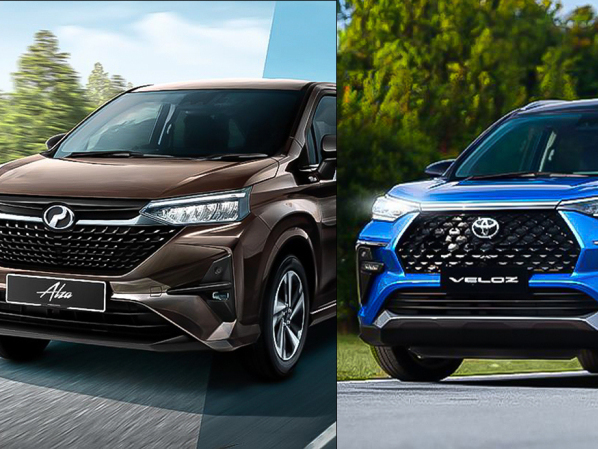
Toyota Veloz vs Alza: Which 7-Seater Is Right for You?
Kevin WongJul 15, 2025
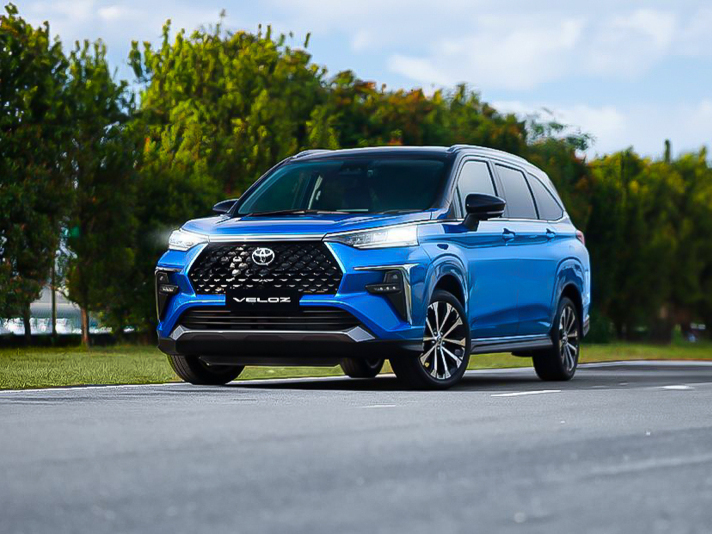
Toyota Veloz Interior Revealed: A 7-Seater Made for Malaysian Families
Kevin WongJul 14, 2025
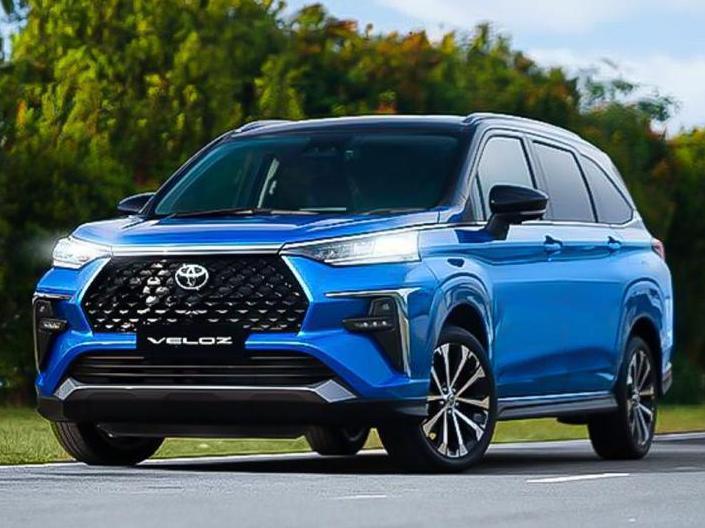
Style Meets Space: A Deep Dive into the Toyota Veloz
JamesApr 14, 2025

Produced by the same factory, why is there nearly a RM20k price difference? How to choose between Perodua Alza and Toyota Veloz?
JamesOct 21, 2024
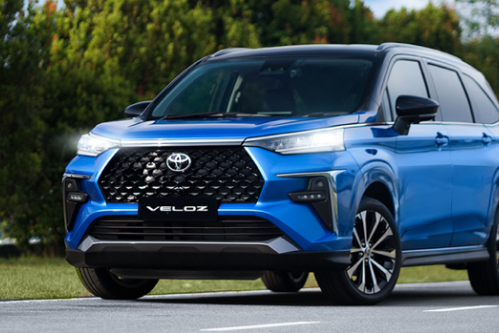
The Toyota Veloz is Priced at RM 95k in Malaysia with TSS, Wireless CarPlay etc.
LienMay 3, 2024
View More











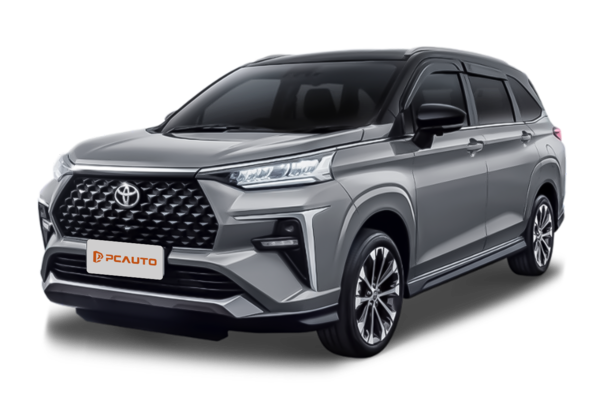





Pros
Cons